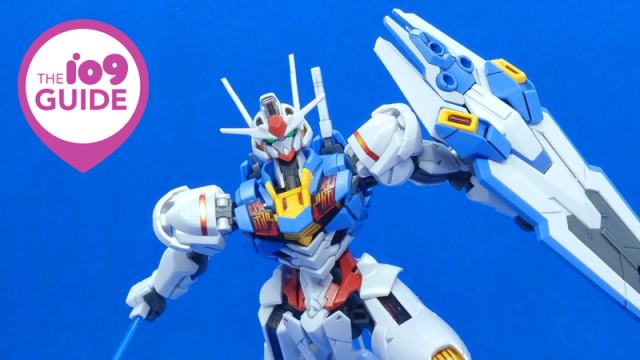With a new Gundam show about to wrap up its first set of episodes this weekend, the venerable mecha anime franchise hasn’t been this talked about in years — and neither have the plastic model kits that helped save the series from cancellation doom over 40 years ago. Want to get into the world of building your own mobile suit army? Here’s where to start.
What *Is* Gunpla, Anyway?
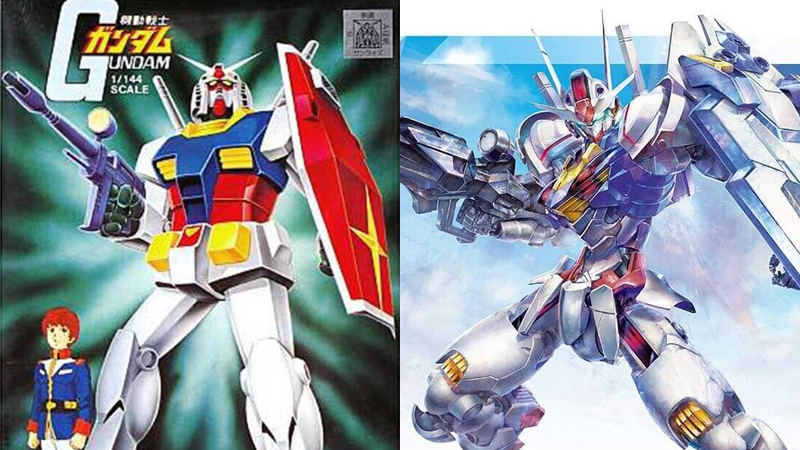
“Gunpla” is a portmanteau for “Gundam” and “Plastic,” and is the common term used for Bandai’s long-running line of plastic model kits based on the Gundam franchise. Gunpla itself has been around since 1980, a year after the original Mobile Suit Gundam aired — and had its episode count culled due to poor ratings. The show’s examination of war trauma and conflict enacted upon a primary cast of mostly teenagers didn’t exactly make for a particularly toyetic series, even with all the giant mecha.
After Clover, Sunrise’s original merchandise partner for Gundam, released a line of toys that didn’t sell well and the series itself was seemingly over for good, Bandai acquired the rights to make Gundam model kits. Unlike Clover’s basic toys, these buildable kits appealed to an older audience that was more interested in what Gundam was doing in the mecha genre, and their success was immediate, helping keep the series’ fanbase alive long enough for the original show to be adapted and re-released into three movie compilations. That paved the way for Gundam’s explosion in popularity and the birth of a franchise that is still going today… alongside the model kit empire that helped save it.
What Kinds of Gunpla Kits Are There?
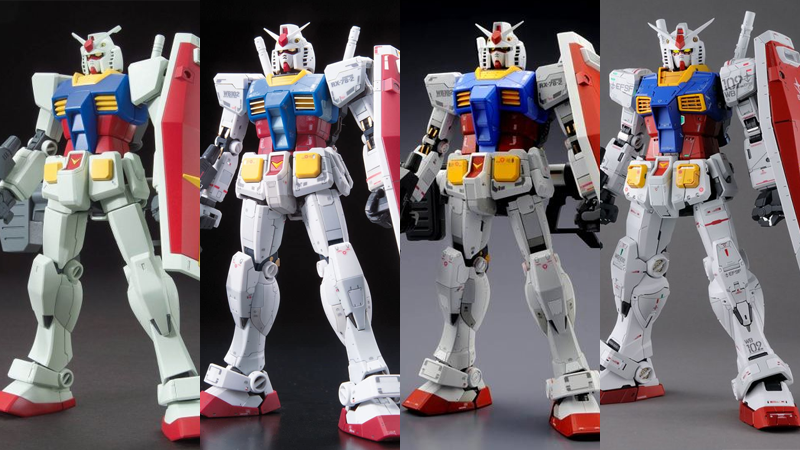
There are four major categories of Gunpla:
- HG, or High Grade – The most common line of Gunpla. They’re 1/144, making an average build roughly 6-7 inches tall when finished, and while they can be overall simple kits to build, they’re still very detailed and posable. These sets retail in Japan for about $US10 ($14)-15, so are great entry point kits, and pretty much every Gundam series, from the original to the latest, Witch From Mercury, is represented to varying degrees.
- RG, or Real Grade – While the same 1/144 scale as HG Gunpla, Real Grade kits favour less anime accuracy in designs, imagining more detailed, realistically armoured renditions of kits. Unlike HG Kits, Real Grades are also defined by having an internal skeleton that the exterior armour is built upon, allowing more intricate poses. A more advanced line, these retail for around $US30 ($42) in Japan.
- MG, or Master Grade – Now we get a little bigger. Master Grades are 1/100 scale, or about another 50% taller than RG and HG kits on average. Most MG kits, like RGs, have internal skeletons and are of a similar complexity to build; they’re just larger in size and can range from more anime-accurate, simpler aesthetics or complex, detailed renditions. More expensive at around $US40 ($56) to $US50 ($69) on average, these kits are usually best saved for when you’ve gotten a few smaller kits under your belt — newer MGs are actually not as daunting to build as some of the older kits in the line, but still, as the name implies, these are not intended for beginners.
- PG, or Perfect Grade – Now we get even bigger! PG kits are 1/60th scale, so about 50% bigger than the average MG kit. There aren’t many of these, but what is in the line is big, expensive, and a challenging build. You’ll want to take your time, not just to build, but to save up: PGs can range around $US150 ($208) and up.
There are some variations beyond these of note. SD kits, or Super-Deformed Kits, are chibi-fied takes on Gundam designs that are smaller in size and simpler to build, and there are also SDEX versions, which keep the chibi aesthetic and provide more articulation. Meanwhile the 1/144-scaled lines have recently been joined by a new EG, or Entry Grade line, modern starter-style kits that take some of the series’ most iconic hero suits and use modern engineering techniques to offer simple yet highly poseable basic builds at a low starting price.
The Master Grade line also has two smaller sub-lines: the RE/100, or Reborn 100 series, and the MG Ver. Ka series. RE/100 kits are the same scale as usual MG kits, but with more simplistic builds in comparison. The Ver. Ka, or “Version Katoki” kits are also 1/100-scaled kits and of similar complexity to standard MG kits — they’re just named for their set’s designer, mecha designer Hajime Katoki, who takes iconic Gundam designs and gives them realistic, detail-oriented makeovers.
What Tools Do I Need to Build Gunpla?
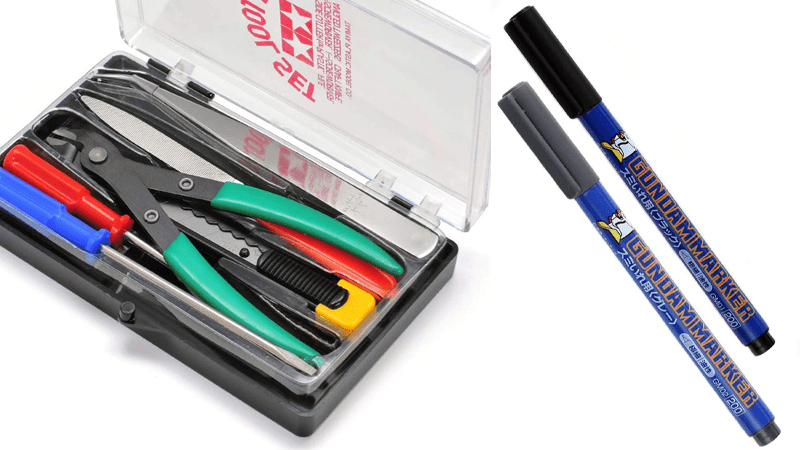
Good news! Gunpla kits don’t need glue to build — no matter how intricate they get, they’re pretty much all snap and push-fit. They all come in mostly accurate coloured plastic too, so you don’t have to paint a kit unless you really want to go all out (more on that later). All you need are basic hobby tools: a nipper or side cutter, to cut parts off of the plastic runners, a hobby or x-acto knife, to trim extra sprue pieces or clean up your parts, alongside a file and tweezers to apply stickers. For certain older kits, you might also need a screwdriver to screw some parts together, but this is not a technique used in most kits from the last decade-plus, so you don’t need to worry about it often. You can usually buy a small set of hobby tools that have all these — I’m still using a Tamiya basic tools set, plus a nicer pair of nippers, that I started regularly building model kits with years ago. You’ll probably also want a cutting mat too, so you don’t hack up bits of your kitchen table or something.
If you want to put a little extra time into a kit, you can also “panel line” it — inking in and around the recessed details on parts to add contrast and shading — with Gundam Markers. There are several types of marker, including basic pens, metallic colours, and “flow” markers designed to fill in panel lines like an ink wash, but you can survive with the conveniently available starter packs of three pens: grey, brown, and black. You’ll want to use grey on light-coloured parts like white, black on darker or intensely coloured parts like blue or red, and brown on yellow and other warm-coloured parts, and you need either some cotton swabs, an eraser, or just your own finger tip to soften and clean up a piece when you’ve marked it up. You don’t have to line a kit — it takes some time, but it’s not difficult, and is an easy way to make your kit pop with minimal extra effort. Read more about the process and some tips and tricks here at Gunpla 101.
How Long Does It Take to Build a Gunpla?
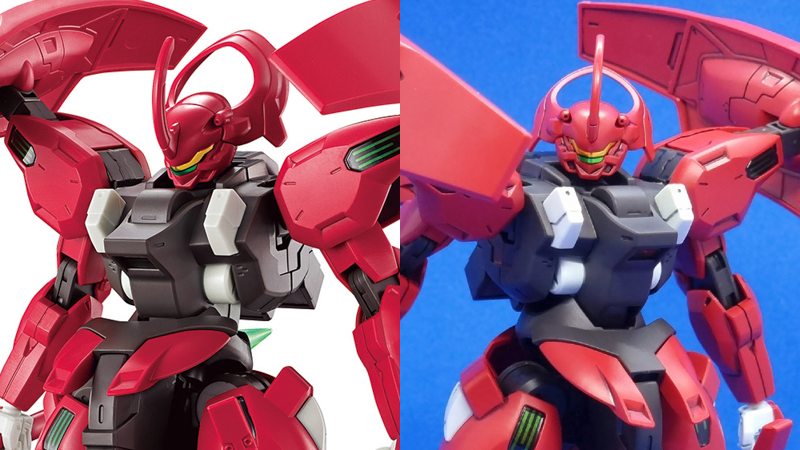
Well, all this depends on your own pace, the complexity of the kit you’re building, and whether or not you’re doing any extra embellishments. An average build time for a straight-built HG kit — just snipped off the sprue and snapped together — might be around 1-2 hours, and double that time or longer if you go the extra step of panel lining each part. More complex kits will take more time, perhaps sessions over multiple days, or even weeks if you’re doing extra customisation work.
Anyway, the point is that it’s not a race. The process of building model kits can be relaxing, and as you’re starting out you’ll probably want to take your time so you don’t rush and make a mistake or break a part. Chill, put some podcasts or a music playlist on, and snip away.
Where Can I Buy Gunpla?
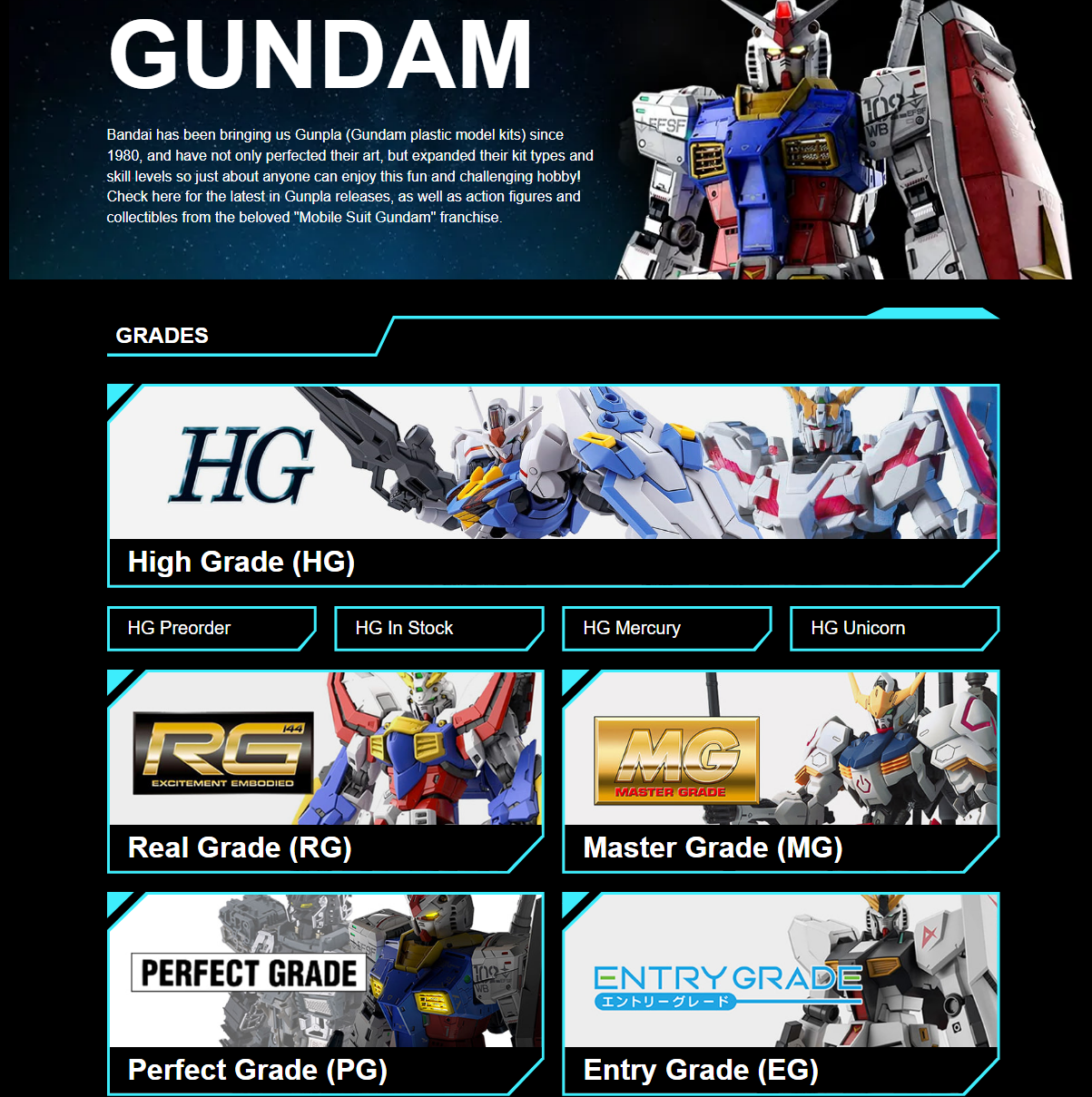
There are two options here: importing from Japan directly, or buying locally (for most of our readers, this will mean U.S. suppliers). There are advantages and disadvantages to both: importing from Japan means you’re going to be paying less for a kit more often than not, as you’re paying the retail price in yen, but you’ll rack up extra cost on shipping and potential import tax charges. You’ll get access to the latest kits as soon as they’re available too — useful if you want in on either the newest models or are a Gundam convert thanks to Witch From Mercury, where most of the available kits aren’t necessarily easy to get outside of Japan (or in it, given the series’ popularity) right now. The easiest options for this are Hobbylink Japan, or Amazon Japan.
Buying from a local supplier for Bandai America — whether it’s on shelves at stores like Target or your local hobby shop or comics store, or online at everywhere from Amazon or Big Bad Toy Store, to specific Gunpla stores like USA Gundam Store, Newtype, and many more — means you won’t have to worry about import fees, and shipping won’t take as long. But you’ll probably end up paying higher prices per kit, as most suppliers will raise the RRP to account for their own imports, and you’ll also be waiting longer for newer kits to get officially distributed.
Which Kit Should I Buy First?
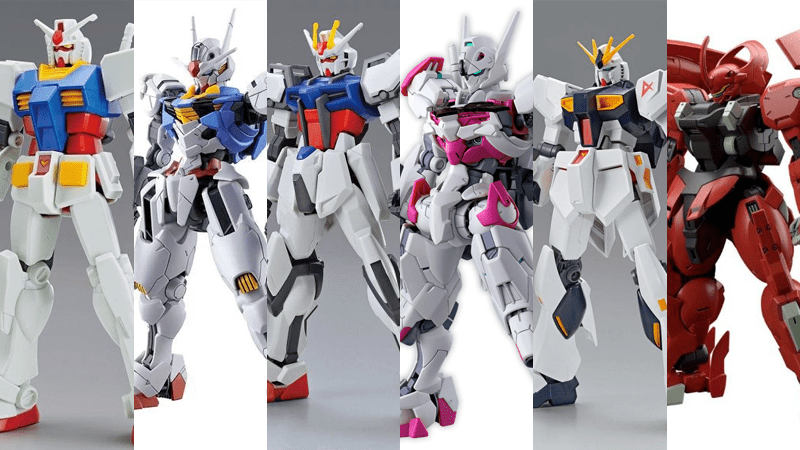
It all comes down to taste! If you’re worried and want a guaranteed basic starting point, the aforementioned Entry Grade line is a great place to start. There are three kits in the series so far: the classic Gundam RX-78-2 from the original series, the Nu Gundam from Char’s Counterattack, and the Strike Gundam from Gundam SEED. There’s variations here too, ranging from the cheapest, bare-bones sets that have little in the way of extra accessories, or more complete options packs that include more weapons.
Beyond that, if you’re already a Gundam fan, just go with designs from your favourite series — odds are there’s going to be an HG kit of it, although the more obscure the mobile suit, the likelier the kit is going to be older, and not as enjoyable or as well engineered as modern kits in terms of their builds. If you’re just here for the mecha modelling factor and not Gundam specifically, well… take a look at some kits and see what designs appeal to you!
If you’re looking for a personal recommendation, if you’re willing to import (and perhaps wait around, as they often sell out fast), the HG Witch From Mercury line has been consistently excellent so far. The newest kits Bandai are making at the moment, they’ve all been incredibly enjoyable yet simple builds, packed full of cool techniques and details that give you a fantastic end product. I’ve loved every one I’ve built, but a particular shoutout goes to the Gundams Lfrith and Aerial, and Guel’s Darilbalde.
Where Do I Go From There?

The sky’s your limit! Or your shelf space, more likely. Gunpla is a pretty chill hobby — you don’t have to constantly keep upping the complexity of the kits you build or the amount of extra work you do to them if you don’t want to. You’re not any lesser a hobbyist if you only straight-build HG kits than if you custom-paint MGs like they’re going out of fashion. But if you do want to start learning more techniques, there’s plenty of paths to take.
Panel lining is the first, obvious step, but from there you can get into using decals — fine detail stickers that recreate emblems and technical markings to give kits a more realistic aesthetic, commonly included in RG kits and up — and top coating to preserve those stickers as they age on your displays. You can go into further painting techniques and either weather your kits with battle damage and grime, or repaint them to give a metallic effect or an entirely different colour scheme.
It doesn’t even have to be anything you do to the models themselves to take your kits to the next level — grab a lightbox and get into posing and photographing your kits, build scenery for display or take them outside for a more realistic photoshoot. Or just figure out how you’re going to end up displaying the inevitable small army of plastic robots you’ll inevitably get — because honestly, you’re not going to stop at just one. Have fun!
